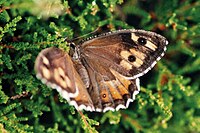
Photo from wikipedia
ABSTRACT Spontaneous alternation behavior (SAB) describes the tendency of animals to alternate their turn direction in consecutive turns. SAB, unlike other mnestic tasks, does not require any prior training or… Click to show full abstract
ABSTRACT Spontaneous alternation behavior (SAB) describes the tendency of animals to alternate their turn direction in consecutive turns. SAB, unlike other mnestic tasks, does not require any prior training or reinforcement. Because of its close correlation with the development and function of the hippocampus in mice, it is thought to reflect a type of memory. Adult zebrafish possess a hippocampus-like structure utilizing the same neurotransmitters as in human brains, and have thus been used to study memory. In the current study, we established SAB in zebrafish larvae at 6 days post-fertilization using a custom-made forced-turn maze with a rate of 57%. Our demonstration of the presence of SAB in larval zebrafish at a very early developmental stage not only provides evidence for early cognition in this species but also suggests its future usefulness as a high-throughput model for mnestic studies. Summary: Larval zebrafish show spontaneous alternation behavior, supporting the future use of zebrafish as a high-throughput pharmacological model in mnestic studies.
Journal Title: Journal of Experimental Biology
Year Published: 2017
Link to full text (if available)
Share on Social Media: Sign Up to like & get
recommendations!